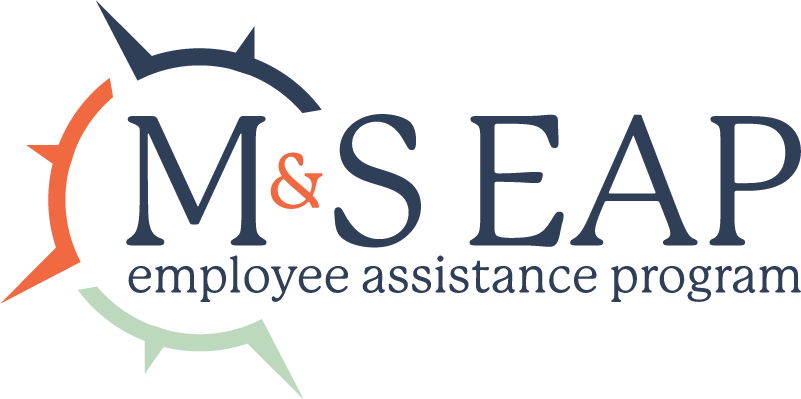Making Changes Successfully: What We Need to Do to Engage Our Staff, From the (Virtual) Desk of Chuck Mazzitti

At this point, you are probably looking to implement changes to your operations, whether by insight or necessity. These changes may be subtle, like adding mitigation strategies to the workplace, or more significant operational shifts like working from home and/or electronically providing services to your clients and customers. The odds on making a successful major transition in operations are not in our favor. Historically, these transitions have a 70% fail rate. We have a better chance of getting this wrong than getting it right. Let’s talk about some of the things that can tilt the odds of success in our favor.
As we look to return to work, there are several things to consider. Given the current pandemic complications, what do we need to change, and why? Once we establish that, the next step is how do we make those changes? Putting a solid strategic plan in place is necessary. However, getting the right message to your staff is equally necessary. Without their buy-in, your chances for a successful transition drop dramatically.
How do we get them to buy in? There are several things you can do to bring them on board.
1 – Sell your team on the need for change.
This will probably be easier given the widespread understanding of the challenges we face. Your staff has to understand that change is necessary. Most of us like things the way they were, and we want to go back to the old familiar. However, it may be a long time before we can return to what was. Perhaps we are looking at changes that will become permanent out of necessity. Given that, make the messaging clear, concise and as short as possible. Wordiness and ambiguity are only going to lead to confusion and speculation. That is not the way to start. Once the message is delivered, check to make sure your team understands the message. What you say and what they hear may be very different. Check with them to be sure you are on the same page.
2 – Understand where your staff is emotionally.
There are several factors to consider here. About 60% of the employees who are currently home are afraid to return to work. They are afraid of getting sick, they are afraid of getting their families sick, or they have no answers for childcare for their kids. They may fear the reaction of coworkers or customers to the new safety requirements in the age of COVID-19. They may also fear losing their jobs. Addressing these fears in the transition plan is essential. What steps are you taking to ensure the safety of your employees? Do they believe you sincerely have their best interests at heart? Your employees are eating more, drinking more alcohol and sleeping less. Their anxiety levels are constantly higher. They may be suffering from anxiety, depression, or have strong feelings of hopelessness. They might even be self-medicating with drugs or acting out in emotionally inappropriate or violent ways.
3 – Realize that most staff are resistant to change.
This is a normal human reaction based on survival, safety and security. Right now, their perceptions of safety and security are badly shaken on many levels. Nevertheless, there are still those who welcome change, and are open to new ways of doing things. You can recognize them by their willingness to discuss and embrace new processes and lines of service. If you can identify those members of your team, you have found the “champions” who can help build support for the operational changes and help you build momentum going forward. Those champions can bring the others along, helping you to build a team that is on board and excited about where things are headed. When everyone has a clear vision of where you are going as a team, and start to see the results, they will build the foundation that provides stability.
4 – Ask employees to participate in the change management planning process.
As those on the front lines every day, your employees have a working knowledge of day-to-day operations. They know what works and what does not. They understand obstacles and probably can envision new and better ways to do things. Listen to their ideas. You may not use them all. You may use some now and try some later. At least they will be involved in the process and be more likely to feel they are valued as contributors. That kind of engagement is empowering for employees, and helps them regain some sense of control over their personal situation. It is very hard to be critical of a project or process you helped develop. This step can go a long way toward the employees’ engagement in the change process.
5 – Celebrate the successes of the transition plan as you move forward.
It is easy to be caught up in the task aspects of transitional change. However, it is important to see, acknowledge and celebrate when the team hits established milestones in the transition process. There may be some glitches, or problems that arise which you did not anticipate. Those things should not prevent you from recognizing all of the other accomplishments as the process moves forward. Work closely with those team members you identified as “champions,” and those who are coming around to see the benefits of change. Everyone wants to be part of something significant. Everyone wants to be associated with the winning team. If you have the correct plan and execution in place, the team will buy in to the emerging success when short-term accomplishments are positively noted.
6 – Set the cultural expectations for your workplace.
How do you want your staff to behave? How do they need to treat each other? What are the expectations for getting the work done and providing service? How do you expect staff to treat customers and clients? When you look at your business, do you see cooperation, collaboration and mutual support? Or do you see fear, resentment, active sabotage and constant grumbling about the way things are? You must be clear about your behavioral expectations for your staff. Consistently negative attitudes can destroy the fabric of your operation. This will be something that requires ongoing monitoring. You may think everything is fine, but the truth may be bubbling just below the surface. Keep your eyes and ears open. One last point – you need to model the behavior you want to see in your employees. They can spot a hypocrite a mile away. Be the change you want to see, and demand the same behavior from your staff.
7 – At the end of the day, not everyone will get on board.
Despite your best efforts, not all employees will embrace the changes you and the team are making. Some of them will always wish for “the way things were” and criticize all efforts to move ahead. They see every obstacle as validation for their perception that the old ways were better. In addition to that, they will often poison the workplace culture by spreading (usually covertly) their negative beliefs and attitude of resistance. Because their negativity is toxic to your workplace culture, they need to be make a choice: either get on board with the changes and act with respect and professionalism at work, or find another avenue of employment. I often get questions about these employees from employers. They point out that the employee’s behavior is toxic, but note that they are “a good worker” and do their job otherwise. I explain that technical skill is only half of any job, especially in the service sector. The other half is how the employee treats coworkers, management, and customers. Trying to hang onto an employee who is skilled but toxic is a false choice. You are much better off looking for someone who can give you both sides of the equation. Throughout the transition process, give the employee every opportunity to change their attitude. Address your observations and expectations with them. Follow your policy on discipline/performance management. If they don’t – or won’t – adjust their attitude, you will need to make a change. At the end of the day, your team will thank you. They will also respect you, and your team will be better for it. Good luck! The future awaits!
Some people fail to succeed because they fall in love with their excuses. It isn’t the truth that holds them back, it is the belief that the negative things they face are insurmountable. Abandoning these excuses is the first step to success.



